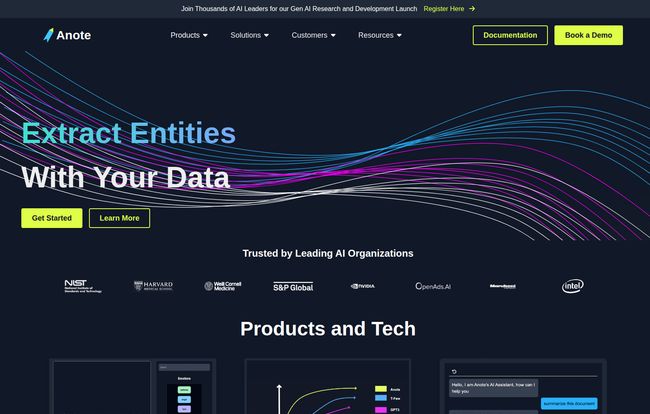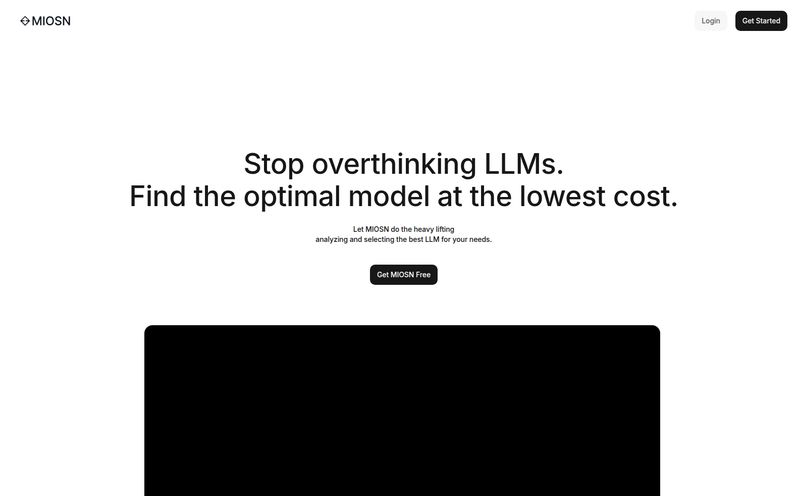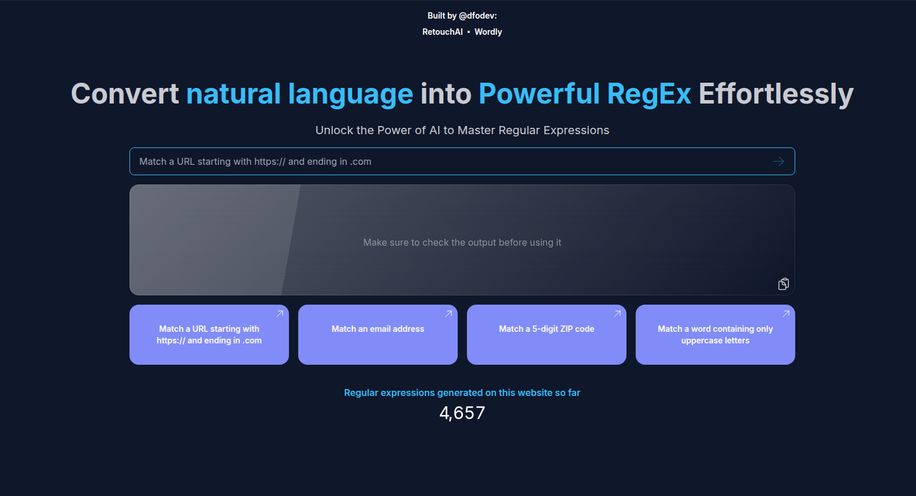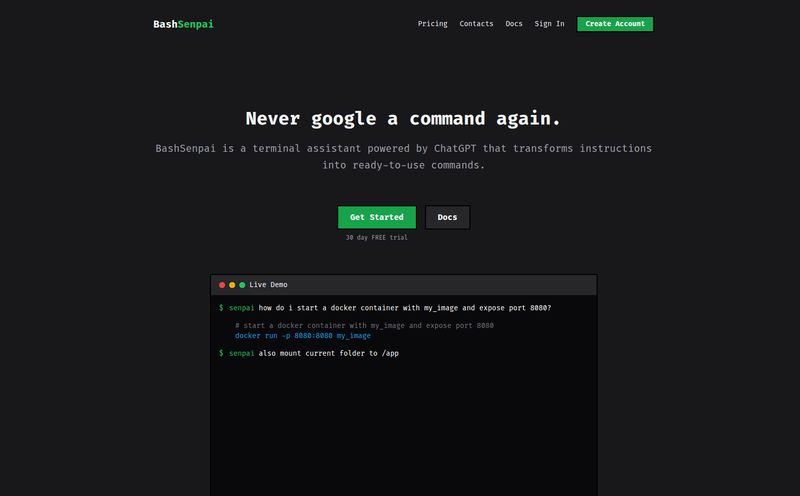If you've ever worked on a machine learning project, you know the drill. You have this brilliant idea, this groundbreaking model architecture... and then reality hits you like a ton of unlabelled data. Data labeling. The two words that can make a grown data scientist weep. We've all been there, right? Staring at a spreadsheet for hours, manually tagging text, feeling your soul slowly leak out of your body. It's the grunt work nobody wants to do, but everyone knows is absolutely critical.
For years, the solution was either to throw interns at the problem or outsource it to a mechanical turk, both of which introduce their own set of headaches—inconsistency, quality control issues, and the sheer time it takes to manage. I've personally wasted weeks, maybe months, of my life on this stuff. So, when a tool like Anote pops up on my radar, claiming to slash labeling time by 95%, my inner skeptic raises a very prominent eyebrow. But my exhausted, data-weary soul whispers... what if?
So I decided to take a proper look. Is this another over-hyped AI tool promising the moon, or is there some real substance here? Let's get into it.
What Exactly is Anote Supposed to Do?
In the simplest terms, Anote is an AI-assisted data labeling platform built for unstructured text data. Think of it less as a fully automated robot and more as a brilliant apprentice. You don't just hand over the keys and walk away. Instead, you show it a handful of examples of what you want—say, labeling customer feedback as 'Positive', 'Negative', or 'Neutral'. You label a few, and then its AI, powered by something they call few-shot learning, takes over and labels the rest. It's designed to classify, extract entities, answer questions from documents, and even help you build your own fine-tuned GPT models.
The big idea is to take the most mind-numbing, repetitive part of AI development and make it... well, not fun, but incredibly fast and accurate. They're trusted by some heavy hitters too—I saw logos for Harvard, Intel, and even OpenAI on their site, which definitely adds a bit of credibility. It's not just some startup in a garage; it seems they have some serious backers.
The Magic Behind the Curtain is Few-Shot Learning
The term “few-shot learning” gets thrown around a lot, but what does it actually mean in this context? Traditional models often need thousands, if not tens of thousands, of labeled examples to learn a task properly. It’s a huge bottleneck. Few-shot learning, as the name implies, allows a model to generalize from a very small set of examples. Just a few shots.
This is Anote’s secret sauce. You’re not spending a month creating a perfect dataset. You’re spending maybe an afternoon. You provide the initial guidance, and the AI extrapolates that knowledge across your entire dataset. This is how they can make those wild claims of a 90% increase in accuracy and a 95% reduction in time spent. It’s not about replacing the human; it’s about augmenting them. You're the director, and Anote is your highly efficient film crew, setting up all the shots for you.

Visit Anote
Putting Anote's Features Under the Microscope
So it talks a big game, but what can you actually do with it? It’s not just a one-trick pony.
More Than Just Labeling Text Data
While data labeling is the core, Anote positions itself as a more complete platform for working with large language models (LLMs). The workflow they seem to be pushing is: Label your data, use that data to train your own supervised models, and then build and fine-tune your own GPT. In the current AI gold rush where every company is trying to build a custom chatbot or internal AI, this is a pretty compelling offering. It covers the entire pipeline from messy, raw data to a functional, specialized AI model for things like sentiment analysis or named entity recognition.
The Unsung Hero of Finding Mislabels
This might actually be my favorite feature, and it's one that's easy to overlook. Garbage in, garbage out. It’s the first rule of machine learning. A dataset riddled with mislabels is poison to your model's performance. Anote has a built-in function to actively identify and help you fix these errors. Think of it as a quality control expert that never gets tired or bored. It can spot anomalies and inconsistencies that a human eye, after staring at thousands of rows, would almost certainly miss. This is huge. It saves you from the painful process of troubleshooting a model for weeks only to realize your training data was the problem all along.
On-Premise for the Security Conscious
For many companies, especially in finance, healthcare, or legal, sending sensitive customer data to a third-party cloud is a non-starter. It’s a security and compliance nightmare. Anote addresses this with an on-premise version available in their Enterprise plan. This means you can run the entire platform within your own private infrastructure. It's a clear signal that they understand the needs of large, serious organizations and aren't just targeting small-time developers.
Let's Talk About the Money, How Much Does Anote Cost?
Okay, this is where the rubber meets the road. A great tool is only great if you can afford it. Anote has a tiered pricing structure that ranges from 'free' to 'call us and sit down first'.
| Plan | Price | Key Limits | My Two Cents |
|---|---|---|---|
| Basic | Free | 50 rows, 10 annotations, 1 user | This is your test drive. It's perfect for a student or a developer wanting to kick the tires and see how the UI feels. You'll hit the limits in about five minutes on a real project, but it’s a smart free tier. |
| Standard | $1,000 /mo | 25,000 rows, 5,000 annotations, 15 users | This is the real entry point for any serious team or small business. The price might look steep, but if it saves you hundreds of hours of manual work, the ROI could be there. It's a significant investment, but a logical one for an active project. |
| Premium | $2,500 /mo | 50,000 rows, 10,000 annotations, 30 users | For larger teams and more demanding projects. The weird thing here is the 'limited API access'. At this price point, I'd expect fewer restrictions on automation, so that's a bit of a head-scratcher for me. |
| Enterprise | Contact Us | Custom/Unlimited everything, On-Premise | This is the 'we have a whole department for this' plan. Unlimited API, unlimited users, and the crucial on-premise option. For large corporations, this is the only plan that makes sense. |
The jump from Free to $1,000 a month is pretty significant. I do wish there was a 'startup' or 'indie hacker' plan for around $100-$200/mo, but I get it. They're aiming for the B2B market where time-saving directly translates to big money.
The Good, The Bad, and The Pricey
So, after digging in, what’s the verdict? No tool is perfect, and it's important to see both sides.
What I really like is the core concept. The few-shot learning isn't just marketing fluff; it's a legitimate technique that solves a real-world problem. The focus on cleaning mislabels is a massive plus, and the on-premise option shows they're thinking about serious enterprise clients. The potential time and money savings are undeniable.
What gives me pause is primarily the pricing structure and the API limitations. That $1,000/mo price point will be a barrier for many smaller teams, no matter how good the tool is. And gating API access on the lower tiers feels a little counterintuitive. The whole point of a tool like this is to build automated pipelines, and a limited API can throw a wrench in those works. Also, the row and annotation limits on the Standard and Premium plans mean you need to have a very clear idea of your project scope before you commit.
Who Is This Tool Actually For?
So, who should be booking a demo? In my opinion, Anote is not for the casual hobbyist tinkering on a weekend project. The free plan is there for you, but that’s about it. This tool is built for professionals.
It's a perfect fit for AI startups and scale-ups that have funding and need to move fast. It's also ideal for the ML departments of large companies that have a continuous pipeline of projects requiring high-quality labeled text data. Finally, based on their own customer list, it's clearly found a home in academic research, where grant money can be used to accelerate research that would otherwise be bogged down by manual data prep.
Some might argue you could hire a team of freelancers for less. And you could. But you'd be trading money for time, management overhead, and a constant battle for quality control. Anote is for teams who value speed, consistency, and accuracy above all else.
Frequently Asked Questions About Anote
- What is few-shot learning in Anote?
- It's the core AI technology that allows the platform to learn how to label your data from just a few examples you provide. This drastically reduces the amount of manual labeling you need to do compared to traditional methods.
- Can I use Anote for free?
- Yes, there is a Basic plan that is free to use. However, it's quite limited (50 rows, 10 annotations) and is best suited for trying out the platform's features rather than for a complete project.
- Does Anote work with data other than text?
- Based on their website and product descriptions, Anote is heavily focused on unstructured text data. This includes things like documents, customer reviews, support tickets, etc. It doesn't appear to be designed for image or video annotation.
- Is my data secure with Anote?
- For most plans, your data is processed on their cloud infrastructure. For companies with high security needs, they offer an Enterprise plan with an on-premise version, allowing you to run Anote entirely within your own secure servers.
- How does Anote compare to just labeling data manually?
- Anote's main advantages are speed and accuracy. It automates the most repetitive parts of the job, claims up to 95% less time spent, and has features to help find and correct human errors (mislabels), leading to a higher quality dataset.
- What if I need more than the Premium plan offers?
- You would need to contact their sales team to discuss the Enterprise plan. This plan is customizable and offers unlimited annotations, users, API access, and the option for on-premise deployment.
So, Is Anote Worth The Hype?
Look, the days of manually labeling hundreds of thousands of data points by hand are numbered. It’s inefficient, expensive, and soul-crushing. Tools like Anote are the logical next step. While it's not cheap, it solves a very expensive problem.
For the right company, Anote could be a genuine game-changer, turning a months-long data prep phase into a week-long task. It makes building custom AI models more accessible and dramatically accelerates the time-to-market. The pricing is a serious consideration, and it's not a tool for everyone. But for those drowning in unstructured text data with a budget to solve the problem? Yeah, Anote is absolutely worth a look. It might just be the liferaft you've been looking for.



